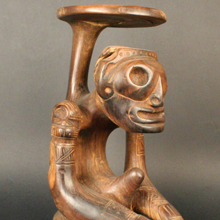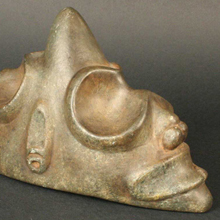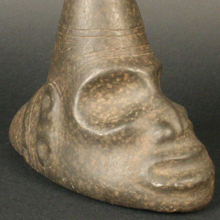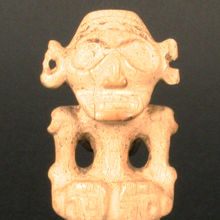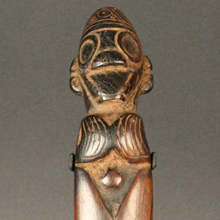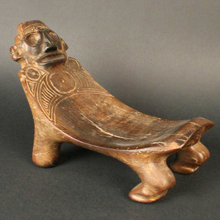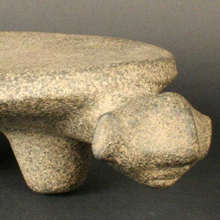Shamanism among the ancient Taino was expressed mainly in the cohoba ceremony, when shamans and important men in the community inhaled psychoactive powders. Seated on their duhos or wooden stools, they first pushed a spatula down their throats, purging the stomach and purifying it to receive the sacred hallucinogenic powders.
The cohoba ritual aimed to help its practitioners to contact the deities or cemies to diagnose illnesses and predict the future. The “trigonolitos”, on the other hand, has been interpreted as propitiatory cemies for agricultural fertility, especially yucca, or mandioc.





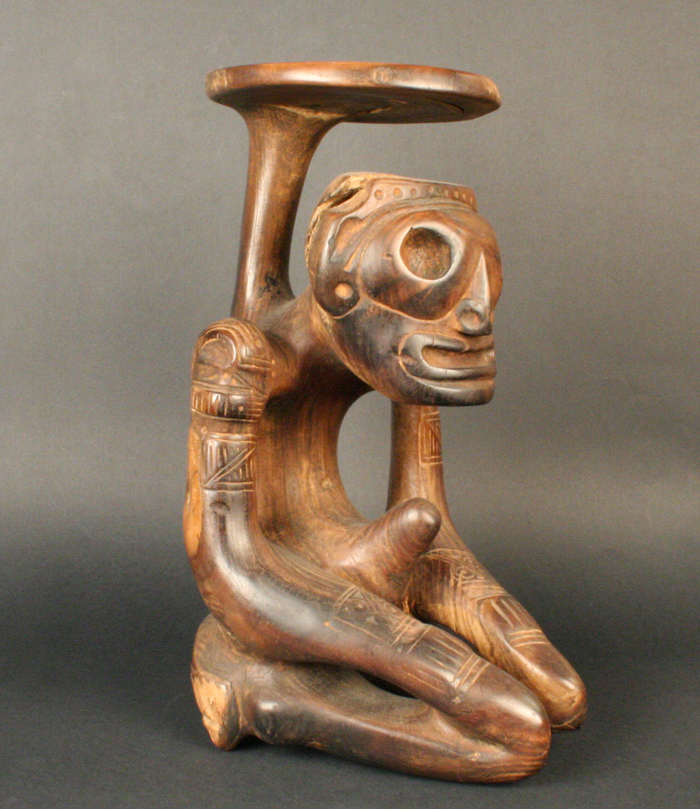
“Cemi”: Figura antropomorfa masculina
Materials: Wood
IV Tardío según Snarski 1300 - 1500 dC
Measures: 398 mm de alto x 200 mm de ancho
Part Code: MCHAP 2122
See the profile of this piece
Materials: Stone
Período Tardío 800- 1600 d.C.
Measures: 130 mm de alto x 230 mm de ancho
Part Code: MCHAP 1109
See the profile of this piece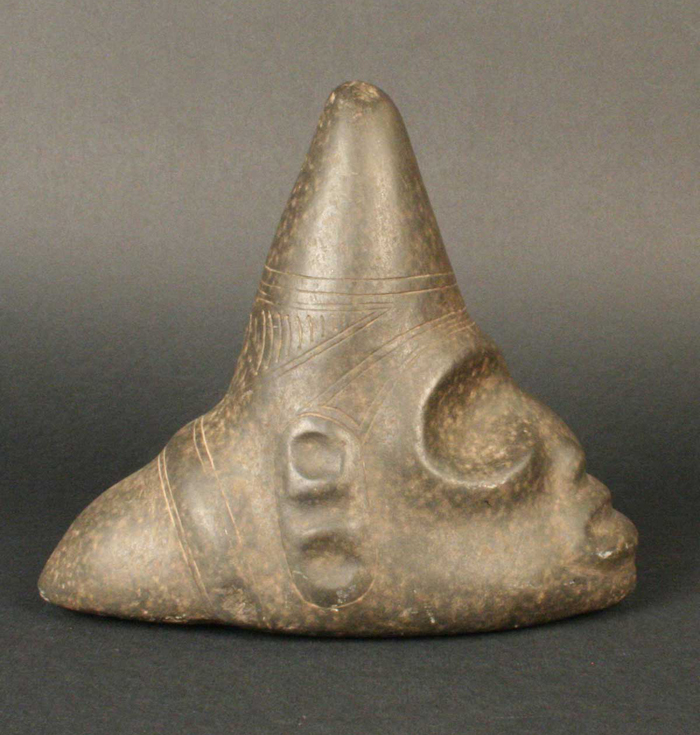
Materials: Stone
Tardío 800- 1600 d.C.
Measures: 160 mm de alto x 185 mm de ancho
Part Code: MCHAP 1110
See the profile of this piece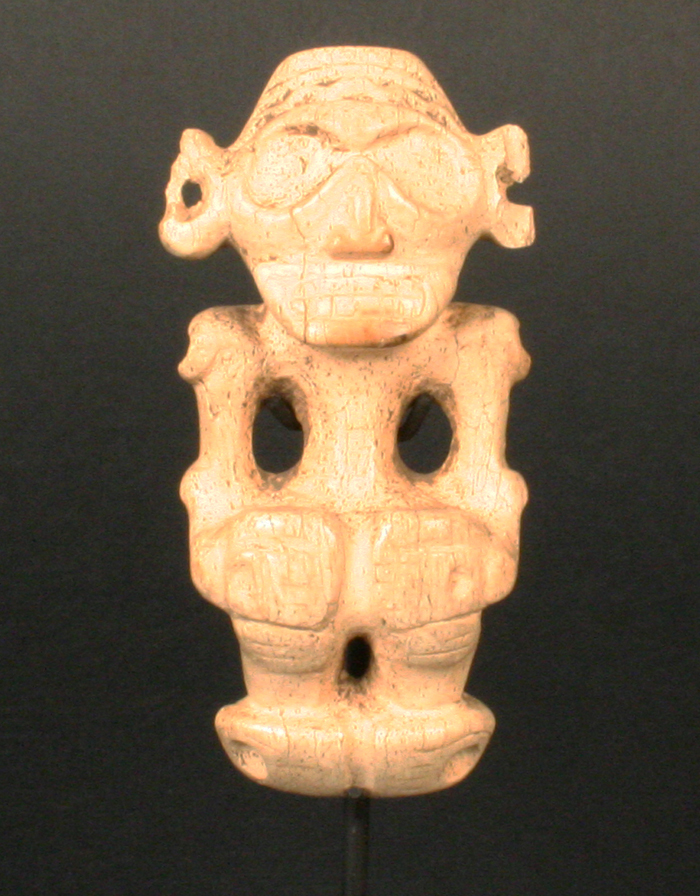
Materials: Wood
Tardío 800- 1600 d.C.
Measures: 280 de largo x 35 de ancho
Part Code: MCHAP 1112
See the profile of this piece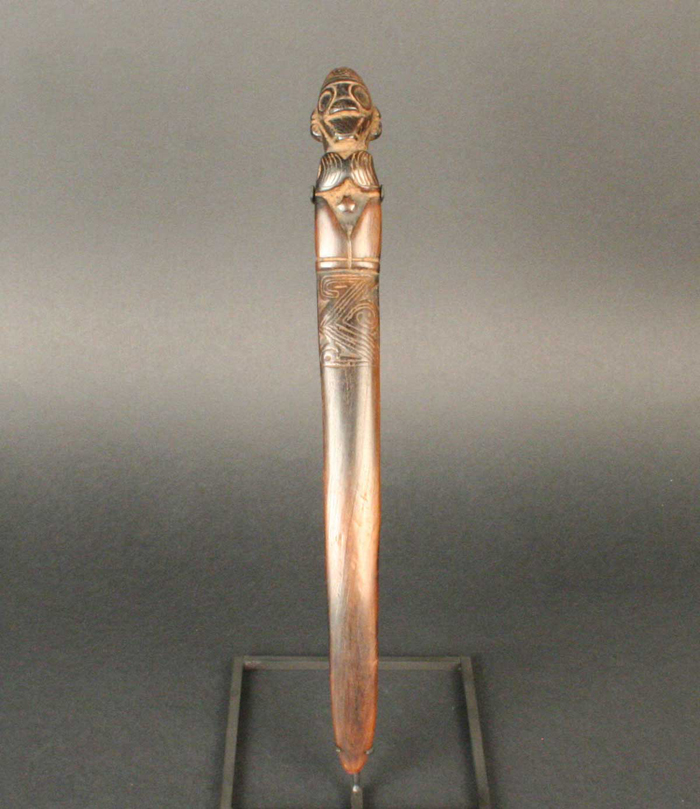
Materials: Wood
Tardío 800- 1600 d.C.
Measures: 320 mm de largo x 33 de ancho
Part Code: MCHAP 1113
See the profile of this piece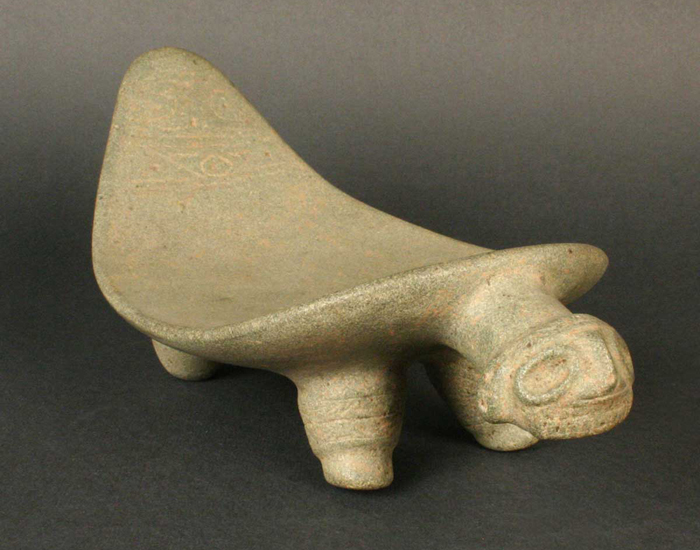
Materials: Stone
Tardío 800- 1600 d.C.
Measures: 110 mm de alto x 272 mm de largo x 128 mm de
Part Code: MCHAP 2123
See the profile of this piece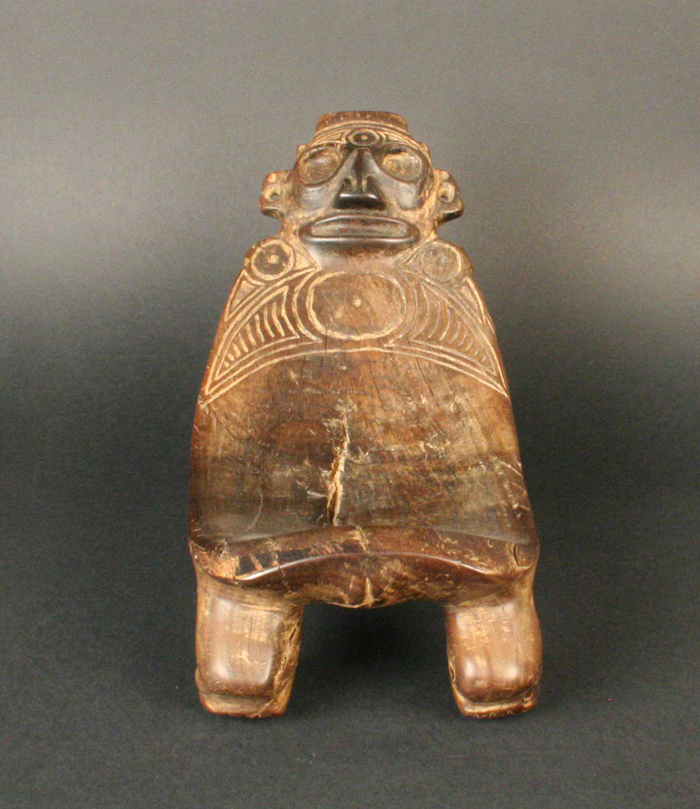
Materials: Wood
Tardío 800- 1600 d.C.
Measures: 300mm de largo x 140 mm de ancho
Part Code: MCHAP 1115
See the profile of this piece
Materials: Stone
Tardío 800- 1600 d.C.
Measures: 280 mm de largo x 200 mm de ancho
Part Code: MCHAP 1116
See the profile of this piece



































